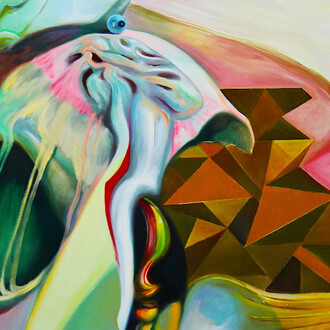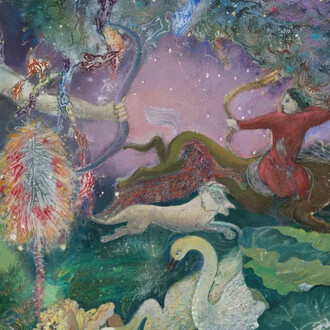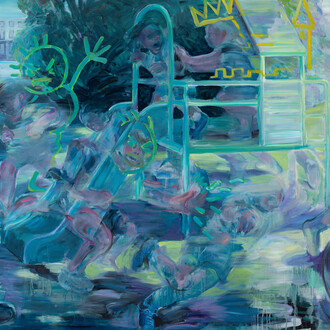Praxis is pleased to present Diorama, a solo exhibition by the Argentinian artist Gaspar Libedinsky, with curatorial text by Diller Scofidio + Renfro. The show will be open from Thursday, Jan 16 to Saturday, March 29, 2025.
Gaspar Libedinsky (Buenos Aires, 1976) is a visual artist, architect, and educator whose interdisciplinary work mediates between urban scale phenomena and the private, intimate space of the human body. Key to his practice is what he calls his ideas fuerzas (driving ideas): the transformation of marginal objects into objects of desire, the conversion of the ordinary into the extraordinary, and the sublimation of everyday products into a “higher life.” Diorama presents three of his most iconic pieces — Nube, Míster trapo, and Kunstformen der natur — each of which rethinks the properties of basic household cleaning instruments: kitchen rags are upcycled into couture, plastic brooms become striking specimens of coral, and dusters turn into an uncanny explosion of clouds.
Implicit in Gaspar’s work is a subtle but searing critique of modern life. Loosely reminiscent of Arte Povera, Pop Art, and Readymades, it uses structural elegance to interrogate our skewed perception of commonplace objects. Why does it feel perverse to see a beautifully crafted garment made of dish towels? Why does it seem grotesque to marvel at the beauty of disembodied broom whisks? In an era of overconsumption, dwindling material resources, and deepening inequality, it is worth confronting the cultural implications of our latent material prejudices – not through preachy finger wagging, but rather through a subtle and provocative aesthetic language that speaks to a broad audience.
It should come as no surprise that the underlying themes in Gaspar’s work have touched a particularly raw nerve in Argentina, which is in the throes of a profound economic crisis. In 2022, his retrospective, Casa tomada at the Museo Nacional de Arte Decorativo in Buenos Aires, attracted a record-breaking 200,000 visitors. The exhibition made a humorous punchline of the absurd and arbitrary socio-economic constructs that have beset the country, explaining its popular – and borderline populist – appeal. Audiences no doubt recognized the brand-name dusters and local materials he incorporated throughout the retrospective; however, these distinctly Argentinian class symbols may elude Americans.
What to make, then, of the relocation of Gaspar’s work to New York City in a gallery adjacent to the High Line? Perhaps we should see it as a homecoming rather than a traveling exhibition. In the early 2000’s, Gaspar worked with our studio on the High Line. Through this and other projects, he refined his knack for questioning the conventions of everyday space, specifically the boundaries between the public and private realms. In keeping with this ethos, he has turned the white cube of Praxis gallery into a three-dimensional recreation of an exogenous environment – a Diorama that can be freely trespassed by the public. While of foreign origin, the three pieces prompt us to reflect on our own distorted socio-economic systems. As the designers of the High Line, we transformed a “marginal” object in a state of disrepair into a “desirable” public destination, attracting millions of visitors and inspiring dozens of copycats worldwide. Twenty years later, in the face of unrelenting gentrification, is the High Line a victim of its own “higher life”?
Perhaps Diorama will parlay the accepted critique of the High Line – which is almost entirely real estate focused, a very American obsession – into a broader global discourse about deepening inequity, unconventional beauty, and stealthy opportunity.
(Text by Diller Scofidio + Renfr)
















